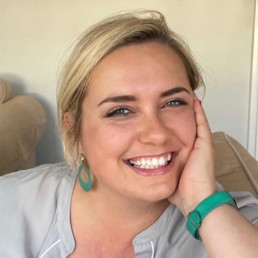
Written by Klaudia Matasovska
Former SEND teacher. She worked for 16 years in London, specifically in the areas of autism and sight impairment. She is currently working as a researcher at Goldsmiths, University of London.
I am really enjoying my PhD journey and I wanted to share some of my key experiences here. In particular, I wanted to talk about the issue of access to students with Special Educational Needs and Disabilities (SEND) which I encountered during my recent data collection. My PhD research interests centre around LGBT inclusion with pupils with SEND. For those who have an interest in intersectional research regarding inclusion and equality in education, this blog might be of use.
Based on my previous practice as a former SEN teacher, the barriers to disabled students’ voices being heard are often there because of the attitudes of others. Sometimes the barriers are (openly) presented via the attitudes of those who are supposed to be on their side. I once had an ex-colleague, a senior leader in one of the schools I worked at, confiding in me that she did not regard disabled students’ right to information about LGBT as ‘important’ because she expected them to have no romantic lives due to their disabilities. Other barriers can be presented via fear rather than stigma. Research shows that there does appear to be a deep-rooted fear amongst educators that talking about non-heterosexual intimacy and relationships with students with SEND is somehow risky.
Research involving the actual voices of students with SEND is limited and I wonder if this is partially due to restrictions imposed on researchers by students’ gatekeepers. This has been my experience, too. Earlier this year, I organised a series of research trips for the Year 1 evaluation of the ‘Equally Safe’ anti-bullying project of the EqualiTeach charity. I worked with a sample of eight mainstream primary and secondary schools including faith and church schools across a range of areas. During my interviews with staff and focus groups with students, I asked about aspects of the Equally Safe programme, such as creating inclusive policies and tackling identity-based bullying using a whole-school approach. I was viewing this research project via an intersectional lens and therefore, the evaluation was also seeking to elicit discussions about the LGBT and SEND intersections amongst other things. The gatekeepers, members of the leadership teams, were asked to select focus group student participants representing a wider selection of the protected characteristics of the Equality Act (2010) and involve student participants who traditionally might not have a voice, such as students with SENDs. Unfortunately, as it turned out – there were no focus group participants present who had any recorded SEND.
I understood that this type of research project can feature sensitive information and there is a need to protect any vulnerable students, ethically speaking. Despite this, the gatekeepers’ efforts to deny those from the under-represented groups an opportunity to have a voice in a research project on identity-based bullying was surprising. In sharp contrast, the focus groups included other types of under-represented pupils. For example, they often (but not always) featured pupils who had come out as LGBT. This is an interesting phenomenon given the fact that the controversial Section 28 of the Local Government Act (1988) is still impacting school culture in England. This is evident in misconceptions about what is suitable and ‘appropriate’ to teach which some educators can still struggle with. Often when I interview teachers about LGBT RSE topics or the SEND/LGBT intersection regarding their school policies and inclusive practice, I notice a hint of anxiety in their responses. They tend to stress that they follow the Equality Act (2010) and often mention having a considerable number of students with SEND. My experience with having no access to this category of students in these schools makes me question the cause behind this. Is this all happening because these schools just do not see these intersections? If that is the case indeed – why don’t they see them? Could the cause of this phenomenon be partially the result of the influence of Section 28? Do educators find dealing with certain types of intersections difficult and uncomfortable despite the law?
I will carry these questions into the second year of my PhD studies. It will be interesting to see if these issues with having access to students with SENDs will still be evident in the next sample of schools I am planning to visit. I would be interested to hear about your academic experiences in this area and any barriers you may have experienced in collecting data involving those who represent the ‘less heard’ category of students. Please, do not hesitate to get in touch with me.

